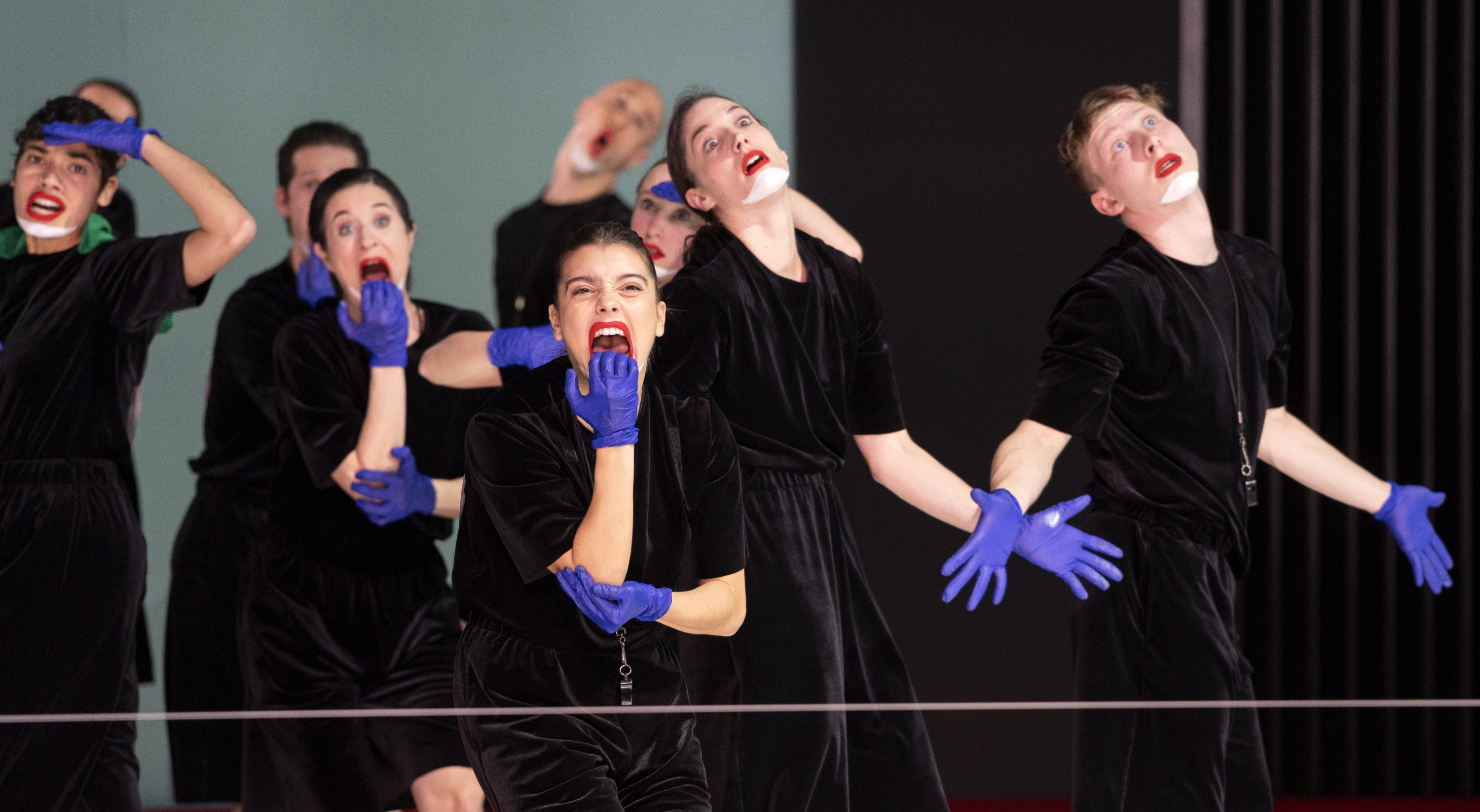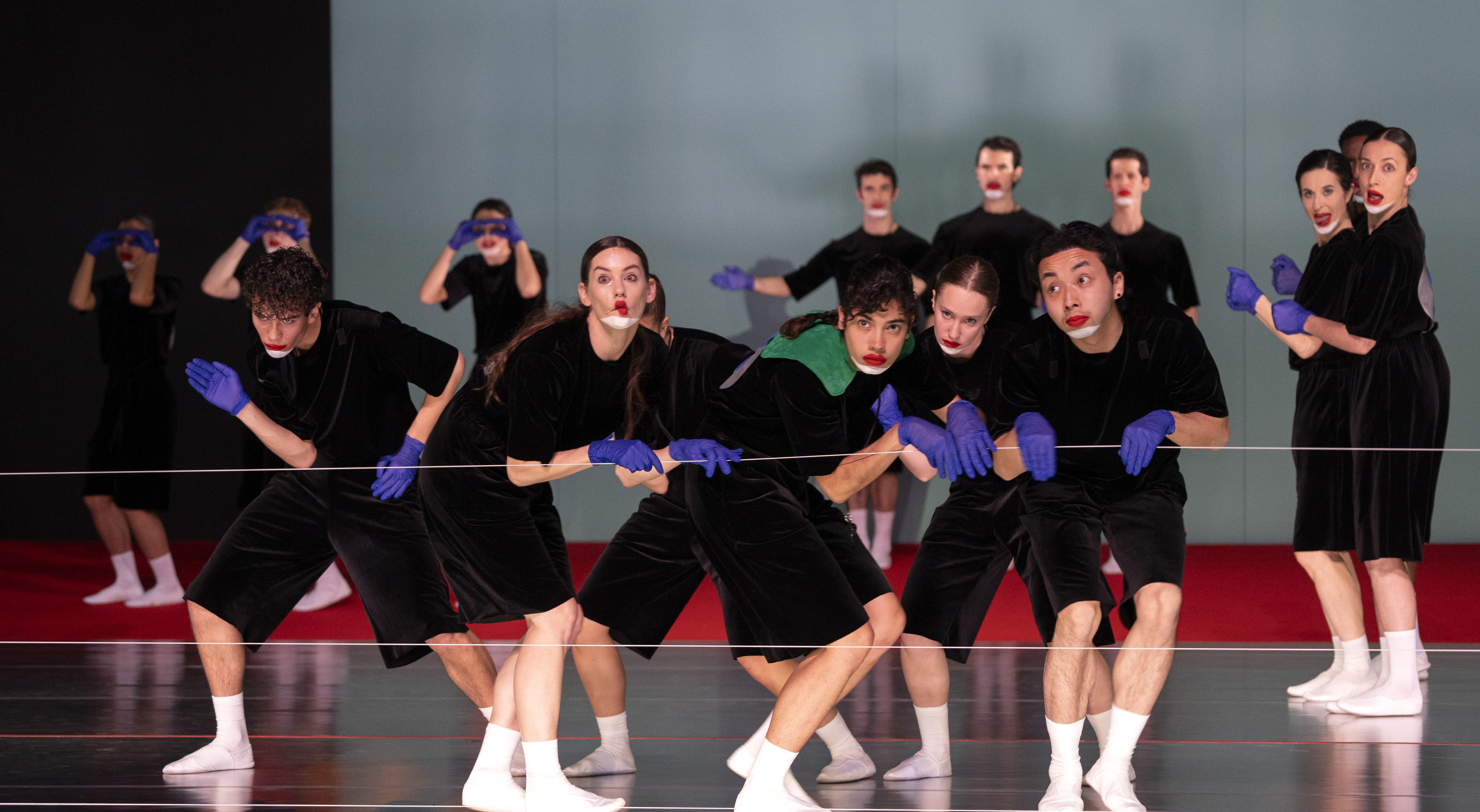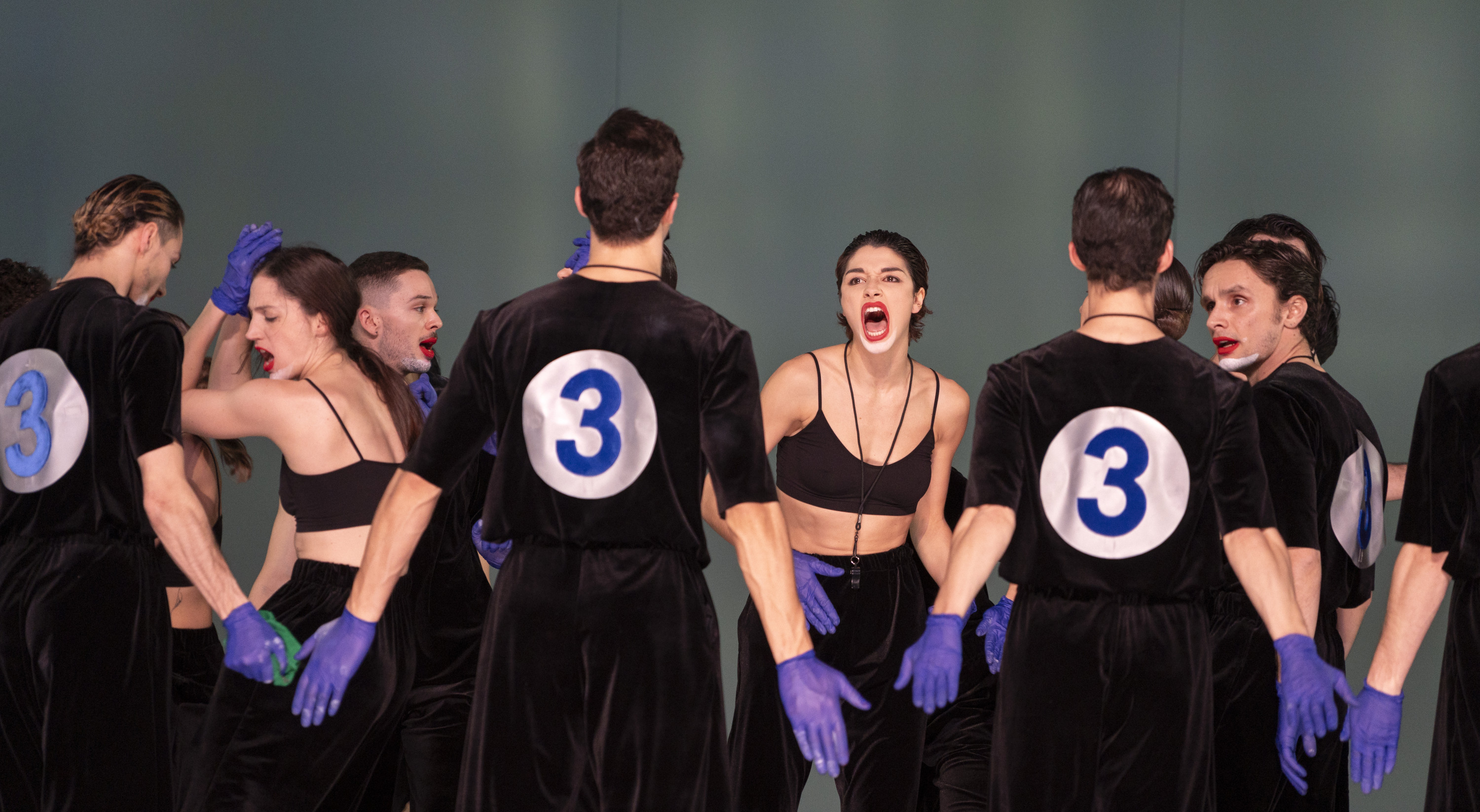Marlene Monteiro Freitas, Ballet de l’Opéra de Lyon
Canine Jaunâtre 3
decemberdec 12 – 14
Choreography, costumes and music Marlene Monteiro Freitas. Assistant choreographer Ben Green. Set design Yannick Fouassier, Marlene Monteiro Freitas. Lighting Yannick Fouassier. Sound Rui Antunes. Ballet Masters Marco Merenda, Raul Serrano Nuñes. Ballet mistress Amandine François. With dancers from the Lyon Opera Ballet.
In collaboration with P.OR.K (Carol Goulart, Janine Lages - Lisbon, Portugal)
Original commission by the Batsheva Dance Company, in coproduction with Julidans; Montpellier Dance Festival 2018
The P.OR.K cultural association is funded by the Portuguese government - Ministry of Culture / General Directorate for the Arts
Co-produced by La Villette; Festival d'Automne à Paris
With the support of Fondation Calouste Gulbenkian - Délégation en France and Dance Reflections by Van Cleef & Arpels
Marlène Monteiro Freitas: Olympic warm-up
Read it on Mouvement
Interview: Grimaces, you bet!
Read it on Mouvement
Marlene Monteiro Freitas in Par les temps qui courent.
Listen on France Culture
Following on from the Portrait dedicated to her by the Autumn Festival two years ago, Marlene Monteiro Freitas hijacks the match: twenty-five virtuoso performers, each wearing the same number 3 vests, throw the score into disarray, measure themselves against the grotesque and warp the game. This show sees the eccentric choreographer passing on to the Lyon Opera Ballet a jousting match of hybrid times, a carnivalesque fresco in which the human, animal and machine have a tendency to merge.
On a stage that is a would-be playing field, flanked by a net and a scoreboard, the performers are athletes that go beyond beyond any form of competition. Set to the uproarious rhythm of an original soundtrack blending fragments of pop and classical music, the dancers, like Playmobil automatons with grimacing faces, split their rhythmic movements into different parts and deregulate their energy. These figurines, both symbiotic and robotic, turn humanity in the direction of a bizarre, non-existent place in which it is no longer possible to differentiate the animate from the inanimate. Removing all duality between beautiful and ugly, pleasure and suffering, tiny and the infinite, Marlene Monteiro Freitas subverts any models that the imagination evokes and extends the different possibilities in the direction of the irrational. Probing into the popular cultures of her childhood spent in Mindelo in Cape Verde, the choreographer makes use of every possible rule and constraint, a vital contradiction in itself.
See also
In the same place





